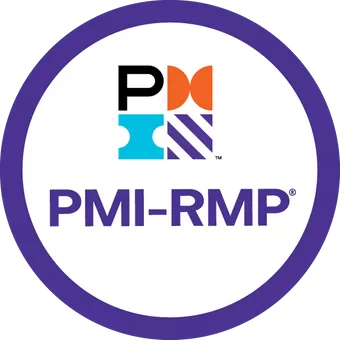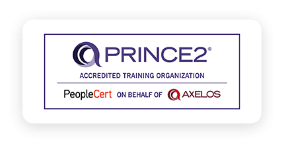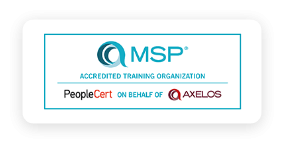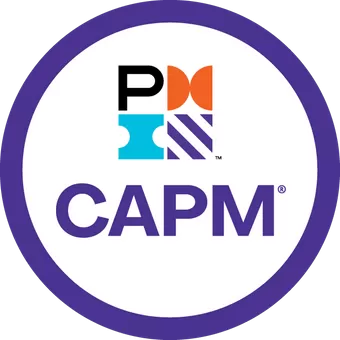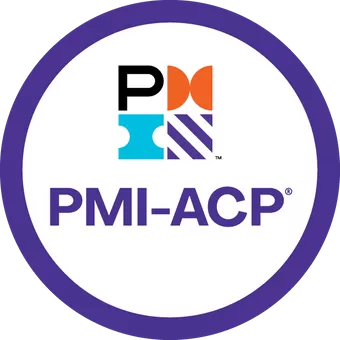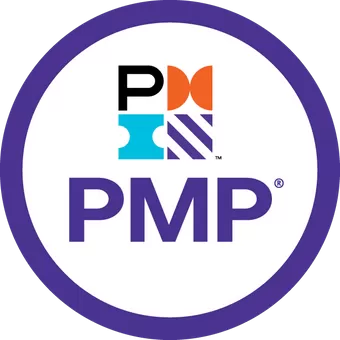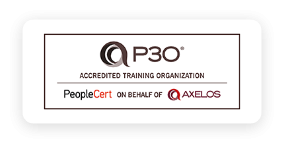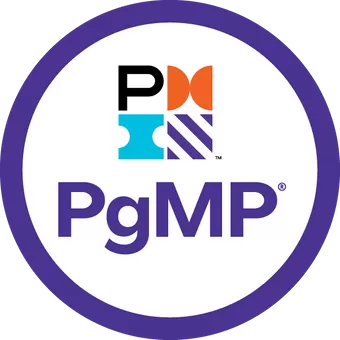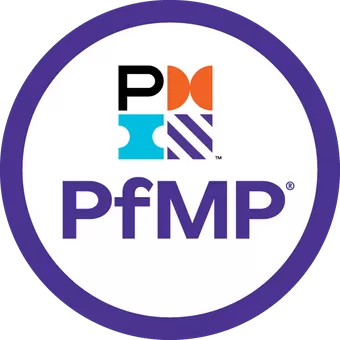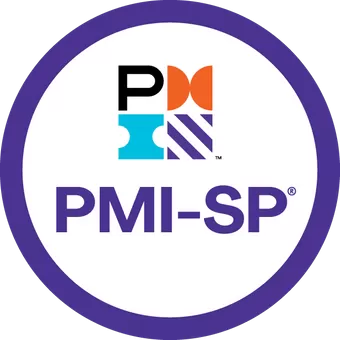
SOP In Project Management: The Power Of Standard Operating Procedures In Project Success
Written By : Bakkah
25 Apr 2024
In the realm of project management, achieving consistency, efficiency, and quality is paramount to success. Standard Operating Procedures (SOPs) serve as the backbone of this achievement, offering structured guidelines for navigating the complexities of project execution.
In this article, we delve into the significance of SOPs in project management, exploring how they streamline workflows, mitigate risks, and foster excellence in project delivery. From understanding the fundamentals to implementing effective tools, we uncover the transformative power of SOPs in mastering the art of project management.
What is SOP in Project Management?
Standard Operating Procedures (SOPs) in project management are documented guidelines outlining the prescribed steps and protocols for completing specific tasks or activities within a project.
These procedures are established to ensure consistency, efficiency, and quality in project execution. SOPs serve as a reference point for project team members, providing clear instructions on how to perform their roles effectively while adhering to predefined standards, regulations, and best practices.
By outlining standardized processes, SOPs help streamline workflows, minimize errors, and facilitate effective communication and coordination among project stakeholders, ultimately contributing to the successful delivery of project objectives.
Standard Operating Procedure Template
A standard operating procedure (SOP) template outlines the purpose, scope, steps, safety measures, and quality checks for completing a task. It helps maintain consistency and clarity in procedures across projects or organizations. Here is a breakdown of the elements of a Project Management Standard Operating Procedure (SOP):
1. Title and Identification
The template should begin with a clear and descriptive title that identifies the process or task for which the SOP is being created. It may also include a unique identifier, such as a reference number or version control information, to track revisions and updates.
2. Objective
This section outlines the purpose and objectives of the SOP. It should provide context for why the procedure is necessary and what outcomes are expected to be achieved by following it.
3. Scope
Define the scope of the SOP by specifying the boundaries of the process or task it covers. That helps clarify what activities are included and excluded from the procedure.
4. Responsibilities
Identify the roles and responsibilities of individuals involved in executing the procedure. That may include specific job titles, departments, or individuals responsible for different steps or aspects of the process.
5. Materials and Equipment
List any materials, tools, or equipment required to complete the task. Include details such as quantities, specifications, and sources for obtaining necessary resources.
6. Procedure Steps
That is the core of the SOP, detailing the sequential steps or actions required to perform the task. Each step should be clearly outlined, including specific instructions, methods, and any relevant safety precautions or quality standards to follow.
7. References
Provide references to any documents, guidelines, regulations, or standards that informed the development of the SOP. That helps ensure alignment with industry best practices and compliance requirements.
8. Documentation and Recordkeeping
Outline any documentation or recordkeeping requirements associated with the procedure. That may include forms, logs, checklists, or other records to be completed and maintained as part of the process.
9. Approval and Review
Specify the process for approving, revising, and reviewing the SOP. Include criteria for determining when updates are necessary and identify the individuals or roles responsible for overseeing these activities.
10. Appendices
Optionally, include supplementary information, diagrams, or examples to support understanding and implementation of the SOP.
By following a structured SOP template, organizations can systematically document and communicate standardized procedures, ensuring consistency, efficiency, and quality across their operations.
Standard Operating Procedure Examples
Standard Operating Procedures (SOPs) are vital documents that outline the prescribed steps and protocols for performing specific tasks or activities within an organization. Here are a few examples of Standard Operating Procedures (SOPs) commonly used across various industries:
1. Inventory Management SOP
This SOP outlines the procedures for managing inventory within a warehouse or storage facility. It includes steps for receiving, storing, picking, and shipping inventory items, as well as protocols for inventory counts, replenishment, and handling discrepancies.
2. Employee Onboarding SOP
This SOP details the steps and requirements for onboarding new employees. It includes procedures for completing new hire paperwork, providing orientation and training, assigning tasks and responsibilities, and introducing new hires to company policies and procedures.
3. Quality Control SOP
This SOP establishes the processes for ensuring product or service quality at various stages of production or delivery. It includes protocols for inspecting, testing, and evaluating products or services, as well as procedures for addressing quality issues, implementing corrective actions, and maintaining quality records.
4. Customer Service SOP
This SOP defines the standards and procedures for delivering exceptional customer service. It includes guidelines for responding to customer inquiries, resolving complaints, handling returns and exchanges, and maintaining positive customer interactions across various communication channels.
5. Safety Procedures SOP
This SOP outlines the safety protocols and procedures to be followed to prevent accidents, injuries, and hazards in the workplace. It includes instructions for identifying and addressing potential safety risks, using personal protective equipment (PPE), conducting safety inspections, and responding to emergencies.
6. Financial Reporting SOP
This SOP describes the processes for preparing, reviewing, and submitting financial reports within an organization. It includes guidelines for collecting financial data, performing calculations and analyses, ensuring accuracy and compliance with accounting standards, and distributing reports to relevant stakeholders.
7. IT Security SOP
This SOP establishes the procedures for maintaining information technology (IT) security and protecting sensitive data from unauthorized access or breaches. It includes protocols for user access management, password policies, data encryption, software updates, and incident response.
These are just a few examples of SOPs commonly used in different industries. SOPs can vary widely depending on specific processes, tasks, and requirements of each organization or project.
How to Create a Standard Operating Procedure
Writing a Standard Operating Procedure (SOP) involves defining the process, outlining clear instructions, addressing safety and compliance, gaining approval, and regularly updating for consistency and efficiency. Here is a guide on how to write an SOP:
1. Identify the Process
Determine the specific process or task for which you need to create an SOP. Clearly define the scope of the SOP to ensure it covers all necessary steps and considerations.
2. Gather Information
Collect all relevant information about the process, including input from subject matter experts, existing documentation, best practices, regulations, and any relevant standards or guidelines.
3. Outline the Procedure
Create a detailed outline of the procedure, breaking it down into sequential steps. Use clear and concise language, and organize the steps logically to ensure easy comprehension and execution.
4. Write Step-by-Step Instructions
For each step of the procedure, write clear and specific instructions on what needs to be done, how it should be done, and any relevant considerations or precautions. Include any necessary details, such as tools, materials, measurements, timeframes, and quality standards.
5. Include Visual Aids
Where appropriate, incorporate diagrams, flowcharts, or illustrations to enhance understanding and clarity. Visual aids can help visualize the process flow and clarify complex steps or relationships.
6. Define Roles and Responsibilities
Specify the roles and responsibilities of individuals involved in executing the procedure. Identify who is responsible for each step, as well as any supporting roles or oversight functions.
7. Address Safety and Compliance
Ensure the SOP includes relevant safety precautions, regulatory requirements, and compliance considerations. Include instructions for handling hazardous materials, using protective equipment, and adhering to legal or industry standards.
8. Review and Revise
Once the initial draft is complete, review the SOP carefully to ensure accuracy, completeness, and consistency. Seek feedback from stakeholders and subject matter experts, and make any necessary revisions or updates based on their input.
9. Approve and Implement
Obtain approval from relevant stakeholders, such as management or regulatory authorities, before finalizing the SOP. Once approved, distribute the SOP to all relevant personnel and provide training as needed to ensure understanding and compliance.
10. Regularly Update and Maintain
SOPs should be living documents that are regularly reviewed, updated, and maintained to reflect changes in processes, technologies, regulations, or best practices. Establish a process for managing revisions and ensuring that all personnel have access to the most current version.
Following these steps will help you develop a clear and effective Standard Operating Procedure that guides the execution of specific tasks or processes within your organization, fostering consistency, efficiency, and compliance.
What is the Purpose of a Standard Operating Procedure
The standard Operating Procedure purpose is to provide clear, standardized instructions and guidelines for performing specific tasks or processes within an organization. SOPs ensure consistency, efficiency, quality, and compliance by outlining the prescribed steps, roles, responsibilities, safety measures, and regulatory requirements.
They serve as a reference tool for employees, helping to streamline workflows, minimize errors, and maintain operational excellence across various functions and departments. Ultimately, SOPs contribute to improved productivity, risk management, and overall organizational effectiveness.
How to Develop a Standard Operating Procedure
Developing a Standard Operating Procedure (SOP) involves several steps to ensure clarity, consistency, and effectiveness. Here's a comprehensive guide:
1. Define the Objective:
Clearly articulate the purpose of the SOP. What process or task does it cover? What are the desired outcomes?
2. Identify Stakeholders:
Determine who will be involved in the creation, implementation, and execution of the SOP. Gather input from relevant parties to ensure all perspectives are considered.
3. Document Current Process:
If a process already exists, document it thoroughly. Include all steps, inputs, outputs, roles, and responsibilities. If no process exists, outline the intended workflow based on best practices or expert knowledge.
4. Draft the SOP:
Write the SOP in a clear, concise, and easy-to-understand format. Use a standardized template if available. Include the following components:
- Title: Clearly describe the process or task.
- Purpose: Explain why the SOP is important and what it aims to achieve.
- Scope: Define the boundaries of the SOP, including what is and isn't covered.
- Responsibilities: Specify who is responsible for each step or task.
- Procedures: Detail the step-by-step instructions for completing the process.
- References: Include any relevant documents, forms, or resources.
- Revision History: Track changes and updates to the SOP over time.
- Approval: Obtain sign-off from relevant stakeholders to ensure buy-in and accountability.
5. Review and Revise:
Have subject matter experts and stakeholders review the draft SOP for accuracy, clarity, and completeness. Incorporate feedback and make necessary revisions.
6. Test the SOP:
Pilot the SOP in a real-world setting to identify any practical issues or challenges. Make adjustments as needed based on feedback from users.
7. Train Personnel:
Provide training to all individuals who will be following the SOP. Ensure they understand their roles and responsibilities and are familiar with the procedures outlined.
8. Implement and Monitor:
Roll out the SOP across the organization and monitor its effectiveness. Collect feedback from users and stakeholders to identify areas for improvement.
9. Regularly Update:
SOPs should be living documents that are regularly reviewed and updated to reflect changes in processes, technology, regulations, or best practices.
10. Document Control:
Establish a system for managing and controlling SOPs, including version control, access permissions, and archival procedures.
11. Communicate Changes:
Whenever updates are made to an SOP, communicate these changes to relevant stakeholders and ensure they have access to the latest version.
12. Continuous Improvement:
Encourage a culture of continuous improvement, where feedback is solicited, and processes are refined over time to optimize efficiency and effectiveness.
By following these steps, you can develop SOPs that serve as valuable tools for standardizing processes, ensuring consistency, and promoting operational excellence within your organization.
The Difference Between Standard Operating Procedure and Work Instruction?
Standard Operating Procedures (SOPs) and Work Instructions are both important documents used in organizational processes, but they serve different purposes and have distinct characteristics.
The main difference between Standard Operating Procedures and Work Instructions lies in their scope and detail level. SOPs provide a broader overview of entire processes, while Work Instructions offer detailed instructions for individual tasks within those processes.
Here's a comparison of Standard Operating Procedures (SOPs) and Work Instructions presented:
|
Aspect |
Standard Operating Procedure (SOP) |
Work Instruction |
Purpose |
Provides overarching guidelines for a process or activity |
Offers detailed instructions for a specific task |
Scope |
Covers entire processes or workflows |
Focuses on individual tasks within a process |
Level of Detail |
Offers a high-level overview of the process |
Provides granular, step-by-step instructions |
Content |
Outlines sequence of steps, roles, responsibilities, safety measures, quality standards, and compliance requirements |
Specifies specific actions, methods, tools, materials, and precautions for executing a task |
Use |
Ensures consistency, efficiency, and compliance across various functions or departments |
Guides task execution, serves as training material and ensures consistency in task performance |
Example |
Inventory management SOP, Quality control SOP, Safety protocol SOP |
Assembly instructions, Equipment operation guide, Data entry procedures |
This table provides a concise comparison of the key aspects of SOPs and Work Instructions, highlighting their respective purposes, scopes, levels of detail, contents, uses, and examples.
Quality Assurance Standard Operating Procedure
A Quality Assurance Standard Operating Procedure (QASOP) is a documented set of guidelines and protocols that outline the processes and procedures necessary to ensure the quality of products or services within an organization.
It typically includes steps for quality control, quality assurance, inspection, testing, and corrective actions to maintain or improve the quality standards established by the organization.
QASOPs are essential tools for maintaining consistency, efficiency, and compliance with quality standards and regulatory requirements across various departments and functions.
Benefits of Project Management SOP
The importance of a Project Management Standard Operating Procedure (SOP) lies in its ability to establish consistent and efficient project management practices within an organization. Here are several key reasons why having a Project Management SOP is crucial:
1. Consistency
A Project Management SOP provides standardized procedures and methodologies for initiating, planning, executing, monitoring, controlling, and closing projects. This consistency ensures that all projects follow the same processes, leading to predictable outcomes and improved project success rates.
2. Efficiency
By outlining clear and structured procedures, a Project Management SOP streamlines project workflows and reduces the time and effort required to complete tasks. This efficiency leads to faster project delivery, optimized resource utilization, and increased productivity.
3. Quality Assurance
A Project Management SOP includes quality control measures and checkpoints throughout the project lifecycle. By adhering to these procedures, project teams can ensure that deliverables meet predefined quality standards and customer expectations, leading to higher customer satisfaction.
4. Risk Management
Project Management SOPs typically include risk assessment and mitigation strategies to identify, assess, and manage project risks effectively. By following these procedures, project teams can anticipate potential challenges, minimize disruptions, and proactively address issues before they escalate.
5. Training and Onboarding
A Project Management SOP serves as a valuable training resource for new project team members. It provides them with clear instructions and guidelines on how to perform their roles effectively within the project management framework, accelerating their onboarding process and reducing the learning curve.
6. Compliance
Project Management SOPs ensure project activities adhere to relevant regulations, standards, and organizational policies. By following these procedures, organizations can demonstrate compliance with legal requirements and industry best practices, reducing the risk of penalties or legal issues.
7. Continuous Improvement
Project Management SOPs are living documents that evolve over time based on lessons learned and feedback from project experiences. They provide a foundation for continuous improvement initiatives, allowing organizations to refine their project management practices and adapt to changing circumstances.
Overall, the benefits of Project Management SOP are numerous. A Project Management SOP is essential for establishing consistency, efficiency, quality assurance, risk management, compliance, training, and continuous improvement within an organization's project management processes.
It serves as a guiding framework that empowers project teams to deliver successful outcomes consistently and effectively manage project-related challenges.
Tools for Creating Effective SOP
Several tools can aid in creating effective Standard Operating Procedures (SOPs) by facilitating documentation, collaboration, and workflow management. Here are some popular tools for creating SOPs:
1. Microsoft Word
Microsoft Word is a widely used word-processing software that offers features for creating, formatting, and organizing text-based documents. It is suitable for drafting and formatting SOPs with text, tables, images, and diagrams.
2. Google Docs
Google Docs is a cloud-based document editor that allows real-time collaboration among multiple users. It offers similar features to Microsoft Word and enables teams to work together on creating and editing SOPs simultaneously.
3. Lucidchart
Lucidchart is a diagramming and visual communication tool that enables users to create flowcharts, process maps, and diagrams. It is useful for visually representing workflows, procedures, and process flows within SOPs.
4. Microsoft Visio
Microsoft Visio is a diagramming software that offers a wide range of templates and shapes for creating flowcharts, process diagrams, organizational charts, and more. It is suitable for visualizing complex processes and workflows in SOPs.
5. Tallyfy
Tallyfy is a process management platform that allows users to document, automate, and track workflows and procedures. It provides features for creating SOP templates, assigning tasks, setting deadlines, and monitoring progress.
6. Process Street
Process Street is a workflow and checklist software designed for creating and managing SOPs, workflows, and recurring processes. It offers customizable templates, task assignments, conditional logic, and integrations with other tools.
7. Confluence
Confluence is a collaboration platform by Atlassian that enables teams to create, share, and collaborate on documents, including SOPs. It offers features for organizing content, version control, commenting, and integrating with other Atlassian products like Jira.
8. SharePoint
SharePoint is a web-based collaboration and document management platform by Microsoft. It provides tools for creating, storing, and sharing documents, including SOPs, with features for version control, access permissions, and workflow automation.
These tools can help streamline the process of creating and managing SOPs by providing features for documentation, collaboration, version control, and workflow automation. The choice of tool depends on the specific needs, preferences, and budget of the organization.
Elevate Your Project Management Skills with Specialized Courses at Bakkah Learning!
Ready to master Standard Operating Procedures in Project Management? Look no further! Explore our comprehensive courses tailored to equip you with the knowledge and skills needed to excel in project management.
Discover a range of certificates that cover Standard Operating Procedures in Project Management. The Project Management Professional (PMP) Certification validates expertise in project methodologies, including SOP development and implementation.
The Certified Associate in Project Management (CAPM) Certification is ideal for beginners, emphasizing fundamental concepts and SOP utilization. The PMI Agile Certified Practitioner (PMI-ACP) Certification aligns closely with SOP principles in Agile environments.
The Risk Management Professional (PMI-RMP) Certification focuses on proactive risk management, including SOP development for uncertainty mitigation. Finally, the Management of Portfolios (MoP) Certification emphasizes governance frameworks and SOP alignment with organizational objectives.
Whether you're aiming for certification or seeking to enhance your expertise, Bakkah Learning offers industry-leading training led by experienced professionals. Don't miss out on this opportunity to advance your career and achieve your goals. Enroll now and take your project management skills to new heights with Bakkah Learning!
Conclusion
In summary, Standard Operating Procedures (SOPs) are indispensable tools for achieving success in project management. By providing clarity, consistency, and guidance throughout project execution, SOPs enable teams to mitigate risks, optimize resources, and deliver projects with precision and excellence.
Embracing the power of SOPs empowers organizations to navigate complexities effectively, ensuring success and progress toward their goals. Let SOPs be our steadfast companions on the journey to project excellence and organizational success.



